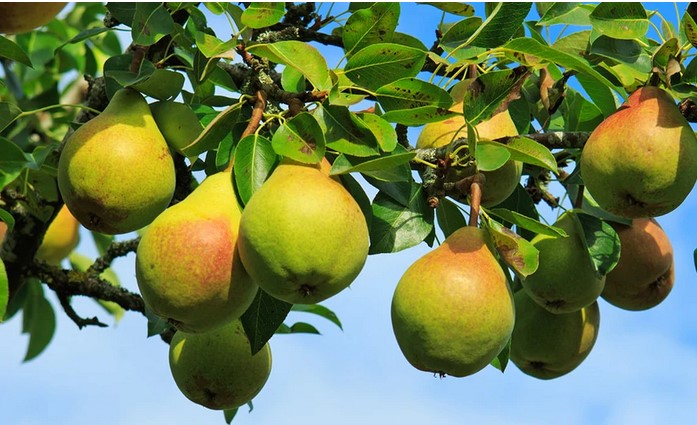Pear Ayers
Pyrus communis ‘Ayers’
Characteristics
- Type: Deciduous
- Zone: 6 – 9
- Chill Hours: 350
- Fruit Ripens: Mid-August – September
- Disease Resistance: Fire Blight
- Sun: Full Sun
- Soil: Loamy, Well-Drained, pH 5.5 – 7
- Height: 12 – 15 Feet
- Width: 12 – 15 Feet
Culture
The Ayers Pear Tree is a vigorous, upright small deciduous tree that will grow between 12 and 15 feet tall and wide, depending on how you prune and train it. Prune as needed in summer, keeping an open tree form, or growing spread out as an espalier on a south-facing wall. In the second half of March, the flowers will open, and they are white with some pink overtones on the back of the petals, making a pretty display. This variety is partially self-fertile, so a single tree will carry a good crop. It takes about 3 years for your tree to bear a significant crop, but a mature tree will produce 10 or even 15 bushels of pears. For the heaviest crop a suitable second pollinating tree is needed, planted within 50 feet. Varieties like Moonglow, Orient and Bartlett are all excellent pears and will pollinate the Ayers Pear Tree – and of course vice versa.
The pears ripen from mid-August into September, and they are fat and round, almost 3 inches across, with a short neck. The skin is mottled yellow, with a red blush on one side appearing when they are nearly ripe. It is best to pick pears shortly before they fully ripen, as ripe pears tend to drop to the ground and bruise.
Noteworthy Characteristics
Most pear varieties come from Europe and do best in mild but cool climates. Ayers Pear Tree was specially bred in the middle of last century. This tree has stood the test of time and consistently proved itself to be perfect for hot summers, and to grow well in all but the coldest parts of the country.
Problems
Click here for help with disease issues and pests.
Uses
Place the fruit indoors for a few days and they will ripen to perfection. The flesh is very sweet and free of grit cells, so it is delicious for eating fresh or slicing in a salad (pass the blue cheese!). This pear also poaches well, and of course it can be baked into delicious pies, pastries, and baked goods.
